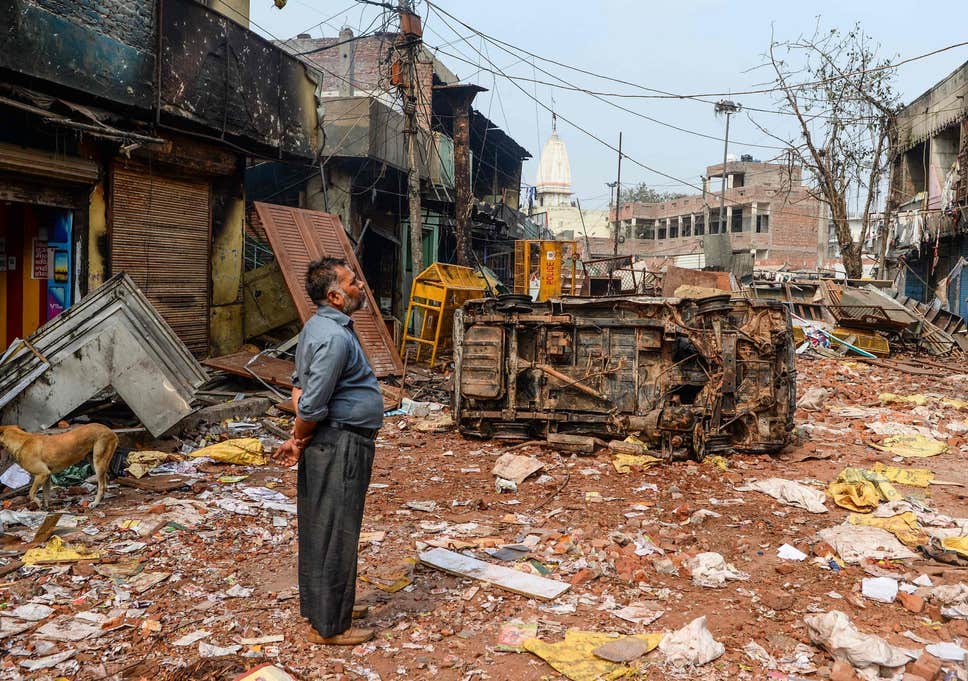
The past week has been turbulent for the people of Delhi, the great capital of India. Tribalism and thuggery came out in their true form and spirit while stories of heroism and valiance brought a glimmer of hope in the minds of the fearful. But this is not a news report and hence, we are not going to discuss the scale of the riots or remember the murdered. Instead I would like to look further ahead to a time when the dust is settled and people look towards opening the pages of a fresh new chapter in the story of the emerging superpower. Would these pages be tainted with distrust and blood?
Diversionary foreign policy has been heavily used since the middle ages by kings and presidents alike. The US invasion of Iraq and the Russian annexion of Crimea have helped boost the ratings of both presidents. India has historically been a country of non-aggression. But the diversionary foreign policies such as the Pulwama attack on Pakistani forces has helped boost the ratings of Mr. Narendra Modi, the prime minister of the country. While this tactic rouses patriotism in the people, it is often short-living.
The BJP has to be given credit for their hard work in sowing division amongst the working class as well as the surge of grassroots nationalism and right-wing movements across the country. Back in 2014, the growing frustration amongst the working class and the public resentment towards policies that favour the minorities were the ammunition in the election arsenal of the then opposition party. Widespread corruption under Congress-rule and the slowing economy also helped them topple the poorly run government.
The politics of division helps garner attention in any majoritarian system. From the white nationalist movements in the West to the Sunni-Shiaa divisions in the Middle East, they all use the same recipe to feed on the vulnerable public. India had its long foregone but not forgiven history of communal violence amongst its Hindu-Muslim population.
In order to escalate the tensions, there is a need for demonisation. For example, the systematic demonization of the Jews in Europe led to the rise of the Nazi state who then gained the support of both Protestant and Catholic churches in persecuting the minority. In India’s case, this is where the Muslim-majority Pakistan comes through. The past record of institutionalised terrorism and dirty war tactics dont help Pakistan’s narrative either. These measures helped the government bring about fascist laws targeting the minority while helping the country become more corporate-friendly, at the expense of the poorer factions of the society who were amongst the drivers of caste-based violence in the country.
That was quite the intro, huh? Now let’s come to the topic of sustainability. After all that is where my ever-so-little expertise lies in. As some of you may know, there are fundamentally three kinds of sustainability. For the most part of the blog, we have discussed environmental sustainability. But the focus of this post also delves on the social and economic aspects of sustainability. Frankly, I may not be objective about this as you may have noticed that I stand against the government’s oppression of critics in media, minorities and political enemies.
Looking at the consequences of the current events in Delhi for the future generations, we can find similarities with the effects of the Gujarat riots in the current youth of India. I was around 7 years old at the time and some of the visuals from the TV screen back home in Dubai still stands afresh. If they have scarred someone like me who was thousands of miles away, imagine the horror in the eyes of those who had witnessed it- young and old. Be it Muslims or Hindus, the victims look for vengeance or bottle it up inside them.
The fragile social structure collapses as the chasms grow deeper, pushing people away from community-based living. The Muslim families who can afford new homes, move away from Hindu-majority societies and thus, isolating them further away from the Hindus. While the lack of interactions between the two communities has contributed to the current mess, further isolation will only lead to worse riots in the future. This process further weakens the chances of social sustainability.
At the end of the day, the richer families find “safer” neighbourhoods and move out of these areas. This leads the government to focus more on the safer neighbourhoods with a higher ROI for their investments, thus deepening the economic inequality in the society. As these people move away, there’s less opportunity for the poorest and the most vulnerable to find a job in the neighbourhood. This adversely affects women and vulnerable minorities in the society creating a bigger economic gap.
Without addressing the social and economic sustainability, the internal displacements and the lack of an environment that fosters practical innovation essentially deprives these societies of building solutions to environmental problems in their locality. No one is willing to invest in the more expensive eco-friendly projects and renewable sources of energy in areas that faced the riots.
I’m sure that the city of Delhi will recover from these riots one day. But what I’m not sure about is the future of the youth from the ransacked suburbs of the city.